You are here: Picturesque townsRavello, the City of Music: Where Art, History, and Beauty Embrace the Sky
Written by (Massimiliano D'Uva), Monday, July 14, 2025 10:38:00 PM
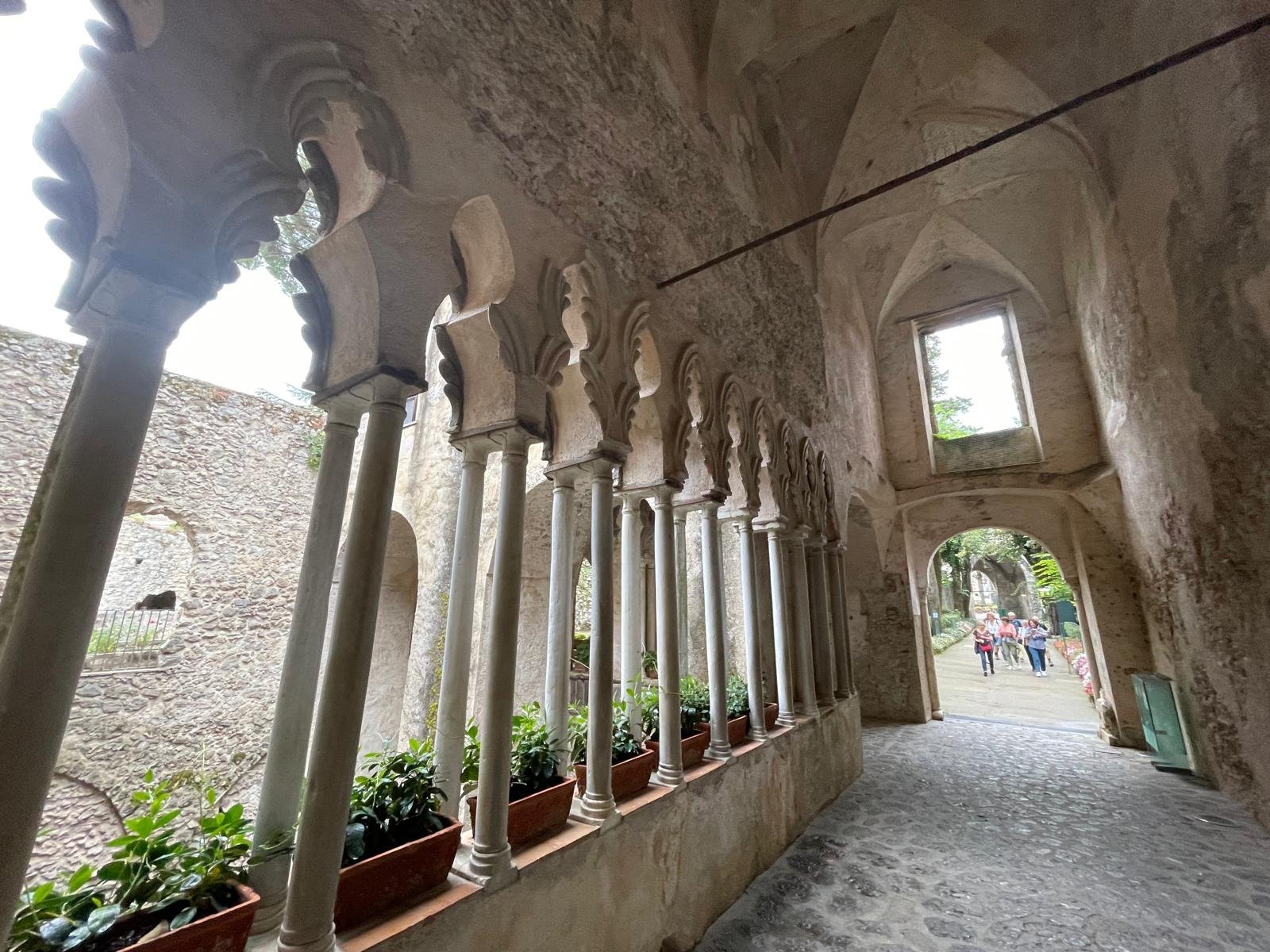
Perched on a rocky outcrop at 365 meters above sea level, Ravello sits in the heart of the Amalfi Coast, overlooking the entire Gulf of Salerno. It is one of the most beloved destinations along the "Divine Coast," thanks to its irresistible charm and worldwide fame—a perfect blend of art and music that has earned it recognition as a UNESCO cultural heritage site and the nickname City of Music.
Even Boccaccio was captivated by Ravello during his stay in Naples, praising it in the Decameron and immortalizing the figure of Landolfo Rufolo.
The town's origins are ancient and somewhat uncertain, though many respected historians agree in tracing its foundation back to Roman times, as evidenced by the remains of Roman villas along the coastline.
According to official accounts, the name Ravello may derive from res bella or rebellum, highlighting the proud independence of its inhabitants against the dominance of the Republic of Amalfi.
Ravello shared the fortunes of the Duchy of Amalfi: from its economic prosperity—thanks to active trade with the East—to its defeat by Pisan forces in 1137. During the Norman period, King Roger promoted the town's status as a bishopric, placing it directly under the authority of the Holy See.
Under the Swabians, thanks to the support of Emperor Frederick II by some of Ravello's noble families, the town enjoyed numerous privileges. However, during the subsequent Aragonese rule, and for many centuries after, Ravello faced a long period of economic and social decline.
Under Bourbon rule, the construction of the coastal road from Vietri to Amalfi ushered in a new era for the region. This Renaissance coincided with the arrival of European travelers in search of ancient ruins and romantic landscapes.
Ravello made headlines during World War II when King Vittorio Emanuele III, fleeing from Rome to Brindisi, stopped here to sign over his powers to his son Umberto, officially marking the transfer of the Lieutenancy.
The town's modern tourism began to flourish with the arrival of the English botanist Francis Neville Reid, who purchased Villa Rufolo and carried out extensive renovations of both the building and its gardens. Soon after, Ernest William Beckett, 2nd Lord Grimthorpe, began building the now-famous Villa Cimbrone.
From that moment on, and throughout the 20th century, Ravello was rediscovered by a steady stream of visitors, both renowned and unknown, seeking peace and inspiration in its timeless beauty.
Among the many notable figures who fell in love with Ravello were André Gide, Edward Morgan Forster, D.H. Lawrence, Greta Garbo, Jacqueline Kennedy, Gore Vidal (longtime resident of Villa La Rondinaia), Totò, Humphrey Bogart, Gina Lollobrigida, and many others.
- the remains of the ancient city walls, strengthened under Charles of Anjou;
- the remains of the Castle of Fratta, also called "Castrum Brusara", was already known in the XIII century and subjected to a bloody attack by the Pisani troops;
- the very few remains of the Castle of Montalto, located between Ravello and Tramonti;
- the Scarpariello Tower(or Ficarola), located in the coastal village of Marmorata, is part of the defensive system created during the viceregal period in order to defend the coastal people against the pirate attacks.
- the Cathedral, dating from the XI century, overlooks Piazza Vescovado. It is a basilican structure divided into three naves by eight granite columns and a transept into which open three apses. The façade is very different from its original shape because of the demolition of the pronao in 1786. Dedicated to Santa Maria Assunta, it was included in the National Monuments list in 1941 and gained the title of Cathedral in 1969. Of particular interest are the bronze door by Barisano da Trani (1179), realized in Constantinople by using the technique in relief for the first time, the Gospel Ambo (1272), the Epistle Ambo (built between 1094 and 1150), the Chapel of St. Pantaleone, patron saint of Ravello, and the Museum, housed in the ancient crypt, preserving the beautiful bust of Sigilgaida Rufolo. The Cathedral id flanked by a square bell tower with large mullioned windows on all four sides and crowned by blind arches in tuff on twin columns.
- the Church of San Giovanni del Toro, built in the XI century, was the place where Ravello's nobility met. It is a basilican structure with three naves supported by eight granite columns. Noteworthy is the Ambo by Alfano da Termoli and decorations in tuff stone of the nearby bell tower;
- the Church of St. Augustine, originally dedicated to St. Adiutore, dates back to the X century; it was later donated by the Bishop of Ravello to the Order of the Padri Eremitani Scalzi of St. Augustine. Today is a war memorial.
- the Church of Santa Maria a Gradillo, dating back to the XI century, is coeval with the Church of San Giovanni del Toro. It was the place where the Heads of the Town met as well as the General Captain of the Duchy of Amalfi. It has a classical scheme with Arab and Byzantine motifs. The interior has three naves with six large columns supporting pointed arches, with three apses and raised transept. It is still visible the original mosaic floor, made of white and grey stones, representing the Life Tree and protected by transparent windows. Also interesting is the bell tower outside.
- the Church of the Annunciation, dating back to the second half of the XIII century, was donated by king Ladislaus to Mr Nicola Fusco. It is divided into three naves by four columns (two in granite and two in pink marble) and preceded by a portico with cross vaults. The Oratory, adjoining the church, consists in a large room with one nave and two small apses on the South side and a larger one of the Western side where a wooden altarpiece in Renaissance style stands. The external domes represents the most famous postcard of Ravello.
- the Sanctuary of Saints Cosma e Damiano, entirely rebuilt in the last years of the XX century in order to accommodate the larger number of believers who go there every year. The original chapel was first documented in 1426.
- the Church of the Saints Philip and James, located in the village of Castiglione, is what remains of the former Benedictine monastery founded in the X century and closed in 1453 by Pope Nicholas V;
- the Church of Santa Maria del Lacco, documented since the XVI century, has a valuable fresco depicting Our Lady with the Child;
- the Church of St. Tryphon, dating back to the XI century, is annexed to the oldest Benedictine abbey of the town. It is divided into three naves and preceded by an atrium by lowered arches;
- the Church of San Martino, now cemetery chapel, dates back to the XI century. It has one nave and there is a beautiful frescoed lunette at the entrance. The bell tower is very characteristic and its architecture was taken up for the realization of the watch tower of Villa Cimbrone;
- the Church of St. Michael the Archangel, one of the oldest churches in Ravello, is divided into three naves by granite columns and preceded by a portico supported by two columns;
- the Church of San Pietro alla Costa, dating back to the X century, has a beautiful atrium supported by a granite columns. It was totally rebuilt after a disastrous collapse in the XVIII century. It has a central nave, a smaller one on the left side and a small room on the right one, probably the former right aisle before the collapse;
- the Church of San Giovanni alla Costa, documented since 1321;
- the Church and Monastery of Santa Chiara, dating back to the last years of the XIII century. The church is divided into three naves by eight columns and still preserves a valuable fresco in Byzantine style depicting Christ Pantacreator;
- the Church of San Francesco and the Convent of the Friars Minor, founded by St. Francis of Assisi according to tradition. The church has one nave and under the main altar is preserved the body of Blessed Bonaventura from Potenza. Very interesting are the square cloister of the XIII century, the bell tower with three floors and the rich library.
- the Church of Santa Maria delle Grazie, originally dedicated to San Matteo, dates back to the XII century. It is divided into three naves and preceded by a portico with cross vaults and flanked by a square bell tower.
- the Church of Madonna dell'Ospedale, also known as Sant'Angelo all'Ospedale, was built in the XIII century by the noble family Frezza;
- the Church of the Rotonda, in Byzantine style, was restructured during the XVII century. The wooden panel depicting Our Lady with the Saints is very valuable;
- the Church of Santa Maria della Pomice, dating back to the XV century, has a beautiful fresco depicting Christ Pantacreator behind the altar;
- the Church of Santa Croce, documented since the XII century, has a valuable altar painting representing the crucifixion.
-Palazzo Sasso, once belonged to the noble family from Scala that gave birth to the founder of the Hospitaller Order of Malta, is characterized by the typical architecture of the Angevin period. The Eastern façade with large arched windows and lanced shaped balconies;
-Palazzo D'Afflitto, another splendid noble residence, decorated with valuable marble pieces coming from the Church of Sant'Eustachio, belonging to the patronage of the noble family from Scala;
-Palazzo Tolla(XIII century), seat of the municipal administration from 1931;
-Palazzo Confalone(XIII-XIV century) is one of the best preserved among the noble palaces in Ravello. The atrium with pointed vaults and inlaid columns is very interesting;
-Palazzo del Principe Compagna;
- the remains of the ancientPalazzo della Marra(XI-XII century);
- the remains of Palazzo Grisone(1251);
- thecourtyard of the Cortese Family, remaining part of the ancient palace of the same name;
- thecourtyard of the Mansi Family, where it was recently found a Roman bath in perfect condition;
-Piazza Fontana Moresca, so called for the presence of a Moorish fountain, where once there was the statues of a winged bull and lion, coming from the Cathedral and stolen in 1975. They are now replaced by copies in lava stone realized by the sculptor Guardo from Catania.
-Villa Episcopio, dating back to the XI century, was a bishopric. During the XIX century was it was annexed to Villa Rufolo and partially restored by Francis Neville Reid. Subsequently purchased by the Duke of Sangro, it was the place where king Vittorio Emanuele III signed the passage of the Lieutenancy in favor of his son Umberto, during the Second World War;
-Villa Rufolo, one of the most beautiful and famous architectural complexes in Ravello. It was built by the Rufolo family, one of the most powerful families in the Medieval period, consists in different structures: the building (XIII century), the tree-lined entrance, two towers, gardens, chapel and the Moorish courtyard. Particularly significant was the restoration works by Francis Neville Reid in 1851 as well as the gardens that inspired Richard Wagner for the scene of the Enchanted Garden of Klingsor;
-Villa Cimbrone, clinging to the rocky ridge with the same name, was bought in the first years of the XX century by Lord Grimthorpe who started extensive restoration works, entrusting them to Mr Nicola Mansi. Throughout the last century, it became a meeting point for the intellectual elite of the time: it is said that the English writer D.H.Lawrence took inspiration here for his masterpiece "Lady Chatterly's lover". From the Belvedere of Villa Cimbrone you can enjoy one of the stunning view of the Amalfi coast.
-Villa La Rondinaia, so called due to its particular position, clinging to the rock of the Cimbrone spur like a swallow's nest, was once owned by Lord Grimtorpe and annexed to the property of Villa Cimbrone. A charming tree-lined avenue brings to the villa, overlooking the sea. For many years it was the residence of the writer Gore Vidal.
- theold paper fabric, in the village of Marmorata, built on an old mill and now used as a hotel;
-Oscar Niemeyer Auditorium, designed by the famous Brazilian architect Oscar Niemeyer, has 400 seats and is preceded by a panoramic terrace.
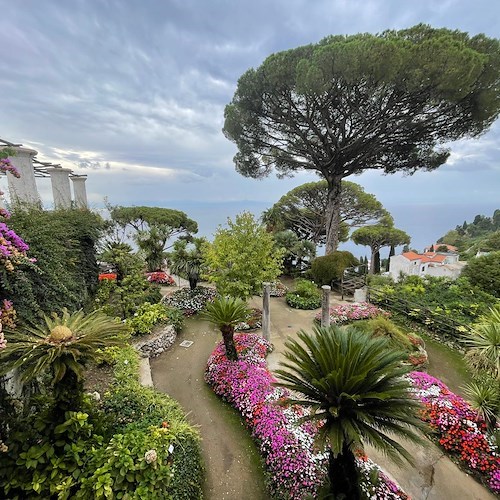 Villa Rufolo
© Massimiliano D'Uva
Villa Rufolo
© Massimiliano D'Uva
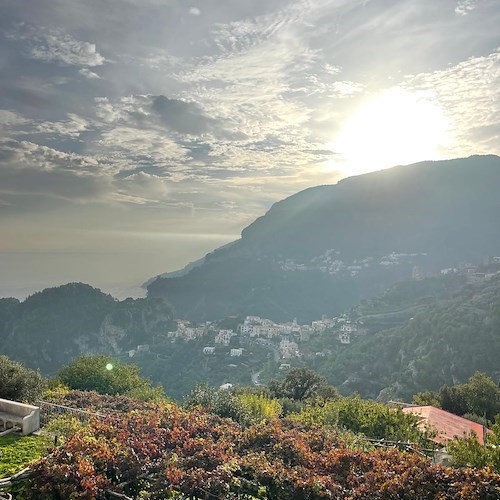 Tramonto ravellese
© Massimiliano D'Uva
Tramonto ravellese
© Massimiliano D'Uva
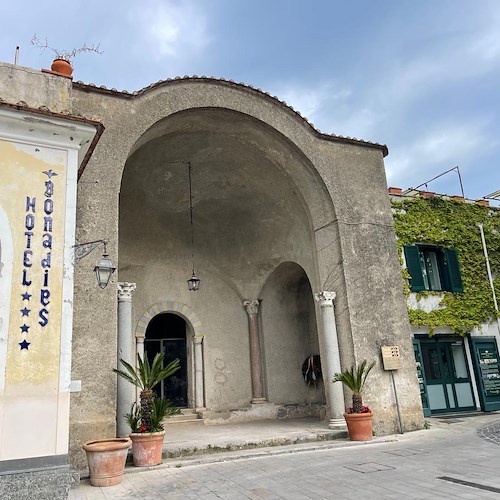
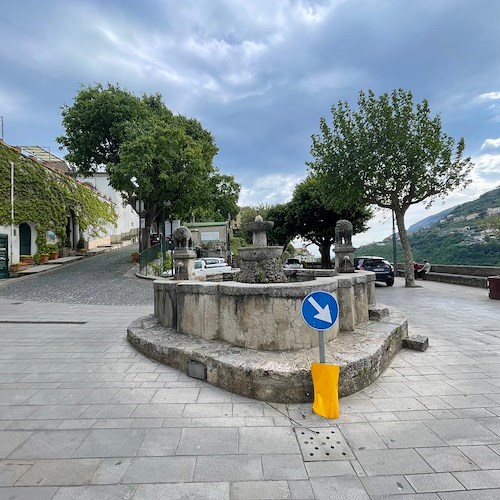 Fontana Maresca
© Massimiliano D'Uva
Fontana Maresca
© Massimiliano D'Uva
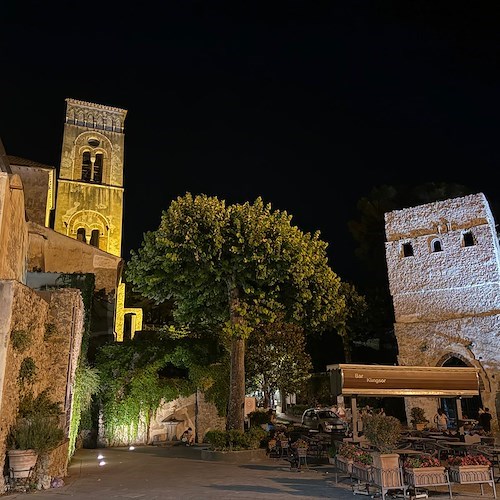 Piazza Vescovado
© Massimiliano D'Uva
Piazza Vescovado
© Massimiliano D'Uva
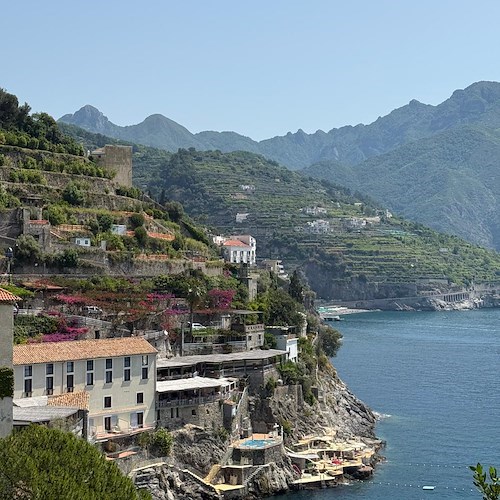 Marmorata
© Massimiliano D'Uva
Marmorata
© Massimiliano D'Uva
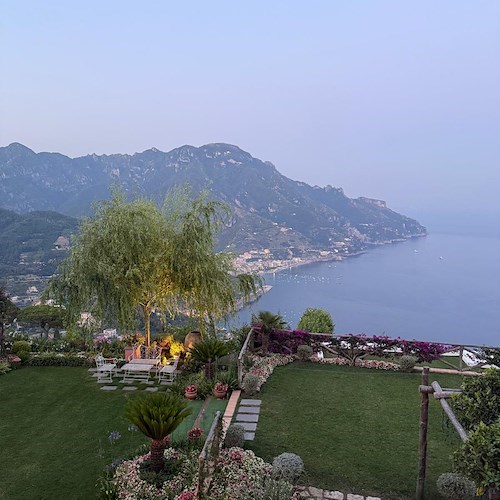 Villa Eva
© Massimiliano D'Uva
Villa Eva
© Massimiliano D'Uva
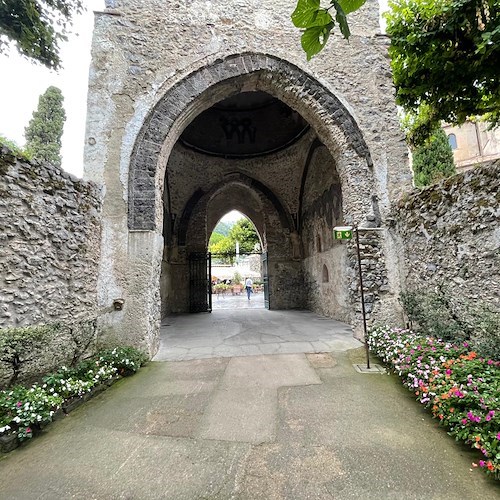 Villa Rufolo
© Massimiliano D'Uva
Villa Rufolo
© Massimiliano D'Uva
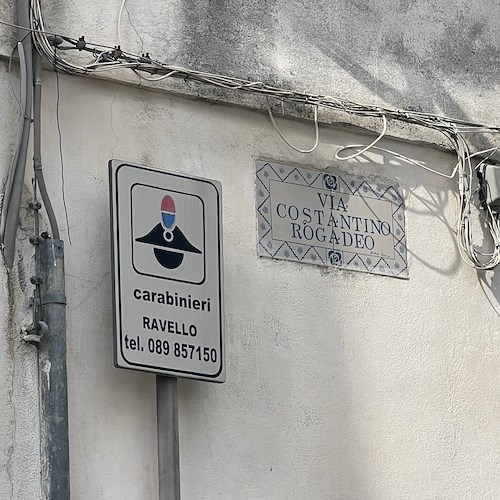 Carabinieri
© Massimiliano D'Uva
Carabinieri
© Massimiliano D'Uva
 Villa Rufolo
© Massimiliano D'Uva
Villa Rufolo
© Massimiliano D'Uva
rank: 103317107
"Words can hardly describe the sunset as seen from this place, where the great planet offers a surprising and unique effect of light; appearing like a glowing sphere descending slowly toward the horizon, into a vast sea that seems to be made of both fire and light, almost saluting with its final rays...
The beauty of the Amalfi Coast never ceases to amaze, but there are moments when nature seems to outdo itself. This is the case with this stunning aerial shot, taken at dawn by Vietri-born photographer and entrepreneur Carlo De Felice, capturing the magic of the first light of day as it gently touches...
Land between the mountains ("intra montes" in Latin), Tramonti is a wonderful town on the Amalfi Coast, set at the foot of the Lattari Mountains and surrounded by a suggestive bucolic landscape consisting of about 145 acres of woods, terraces cultivated with lemon trees, olive trees, and vineyards. The...
Driving from Salerno, Vietri sul Mare is the first of the 13 pearls of the Amalfi Coast, located in the most sheltered spot of the eponymous gulf. Set at the foot of Monte San Liberatore, it overlooks the valley of the Bonea River. Vietri sul Mare is celebrated worldwide for its vibrant, polychrome ceramic...